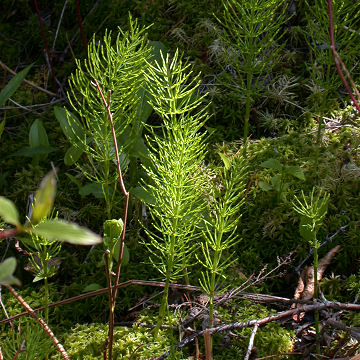

Equisetum arvense - (image 1 of 4)
Taxonomy
Family: Equisetaceae
Habitat
Moist to mesic. Frequent allong roadsides and railroads. Calcareous fens.
Associates
Distribution
All of the U.S. and Canada except FL and LA.
Morphology
Perennial with annual stems; dimorphic. Stems hollow, sheaths toothed; sterile stems branched, whorled; fertile stems smooth, succulent, brownish, unbranched.
Notes
Strobilli produced April to May
Wetland indicator: Facultative.
Very common. The stems of horsetails contain silica and were once used to clean pots and pans. Because of this they have been called "scouring rush". An ancient group of plants, horsetails are closely related to extinct, tree-like species like Calamites.
References
Gleason, Henry A.
and A. Cronquist. 1991. Manual of Vascular Plants of Northeastern United States
and Adjacent Canada. Second Ed.
The New York Botanical Garden. Bronx, NY
Swink, F. and G.
Wilhelm. 1994. Plants of the Chicago Region.
Indiana Academy of Science. The Morton Arboretum. Lisle, Illinois.
USDA, NRCS. 2002. The PLANTS Database, Version 3.5 (http://plants.usda.gov).
National Plant Data Center, Baton Rouge, LA 70874-4490 USA.
|
Michael Hough © 2004 |